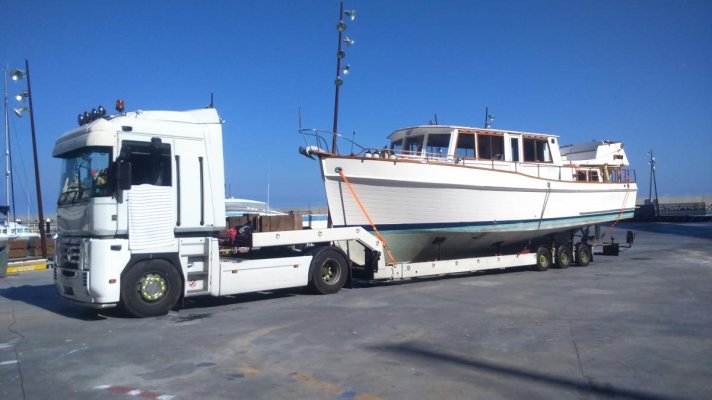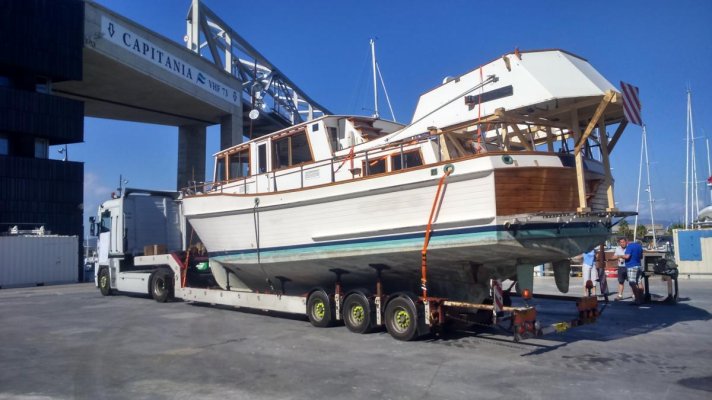I went through a similar thought process when contemplating bringing a mainship 35 through the canals. First point is that you will increase the draught of your boat. You don't say what it is, but increasing it may cause grounding problems.
Second point is be careful where you put all the weight. A surveyor friend of mine warned me that you could potentially make the boat unstable with weight high up (on deck or even higher). While there are no big waves in canals there can be huge amounts of wash from some of the big commercial boats travelling fast in the big river sections. This and the extra ballast might be enough to capsize the boat.
Thirdly another friend suggested having a few crates of inexpensive wines, a few baguettes and a load of cheese. When you come to a low bridge (only a few are at 3.5m) invite all the people watching on board for a bridge party. Put them all over the boat to keep weight low and once you are through ask them all to leave, unless they want a long walk back!
two suggestions are serious one is tongue in cheek!
Gilbert




